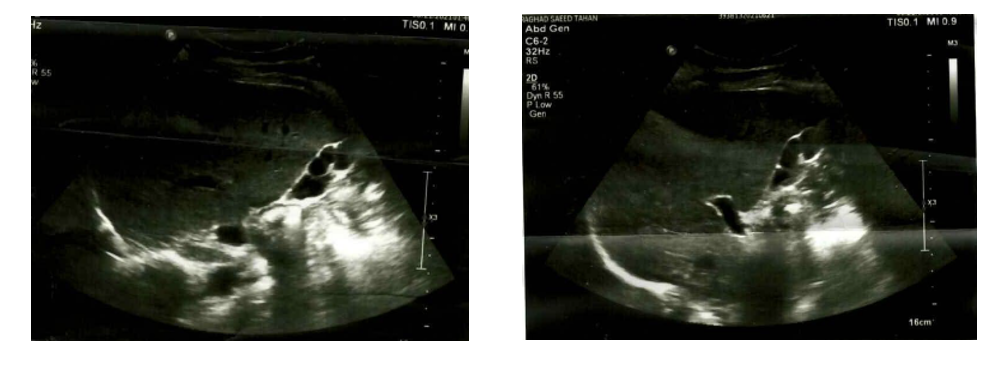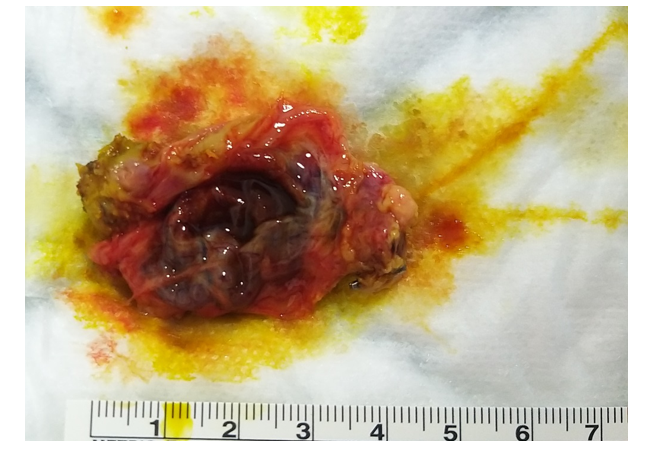Annals of Medical & Surgical Case Reports (ISSN 2652-4414)
Volume 03; Issue 01
Case Report
Ideal Management of Multiseptate Gallbladder in a Symptomatic Adult Patient: A Case Report
Hamed RR¹*, Abu-Zaydeh OH², Al Sarawan ZL³ and Maree M4
¹Department of General Surgery, Al-Makassed Charitable Hospital, Jerusalem, Palestine
²Department of General Surgery, Al-Makassed Charitable Hospital, Jerusalem, Palestine
³Department of Radiology, Al-Makassed Charitable Hospital, Jerusalem, Palestine
4Department of General Surgery, Al-Makassed Charitable Hospital, Jerusalem, Palestine
*Corresponding author: Raed Rafat Hamed, Department of General Surgery, Al-Makassed Charitable Hospital, Jerusalem, Palestine, Tel: 00972525810210; Email: raedhamed92@hotmail.com
Citation: Hamed RR, Abu-Zaydeh OH, Al Sarawan ZL and Maree M4 (2021) Ideal Management of Multiseptate Gallbladder in a Symptomatic Adult Patient: A Case Report. Ann Med &Surg Case Rep: AMSCR-100202
Received date: 28 September, 2021; Accepted date: 29 October, 2021; Published date: 05 November, 2021
Abstract
Multiseptate gallbladder is one of the rare congenital malformations that can affect the gallbladder. Only few cases had been reported about this rare congenital anomaly. Patients with this disease are usually asymptomatic, but when symptoms occur, they mimic those of biliary colic. In this study, we presented a 21-year-old female patient who visited our emergency department frequently with a clinical picture of biliary colic. Abdominal ultrasound revealed multiseptate gallbladder without stones. Therefore, laparoscopic cholecystectomy was done and the patient improved significantly.
Keywords:Congenital anomaly; Laparoscopic cholecystectomy; Multiseptate gallbladder
List of abbreviations:
U/S : Ultrasound
ED : Emergency Department
CBC : Complete Blood Count
LFTs : Liver Function Test
Introduction
Multiseptate gallbladder is a rare congenital malformation that was first described [1]. It is considered one of the anomalies that affect the form of the gallbladder [1]. In 2011, there were less than 50 cases reported among both adult and pediatricpopulations in the English literature [2], and the number has not changed significantly since then.
Diagnosis of multiseptate gallbladder is usually made by abdominal ultrasound (U/S). The lack of documentation of this rare malformation is mostly attributed to the absence of symptoms. However, when the disease is symptomatic, laparoscopic cholecystectomy is a considered one of the treatment options. Few studies had focused on the management of multiseptate gallbladder. Therefore, the aim of the present study is to outline the best treatment option.
Case presentation
A 21 year old female patient, with free past medical and surgical history, and strong family history of cholelithiasis, presented to our emergency department (ED) with a history that dates back to about 6 months prior to presentation when she started to complain of recurrent attacks of epigastric and right upper quadrant abdominal pain that was precipitated by fatty food. The pain referred to the right shoulder, and it was associated with nausea. The patient visited the ED more than three times in the last 6 months with the same complain. Clinical examination showed no jaundice. The patient had abdominal tenderness over the right upper quadrant area with negative Murphey’s and Boas’ signs. During routine investigations, her complete blood count (CBC),liver function tests (LFTs), bilirubin, alkaline phosphatase and amylase levels were all normal. Upper endoscopywas doneone month prior to admission and was normal. Abdominal U/S was done and showed multiseptate gallbladder without stones and with no features of cholecystitis (Figure 1 (A-B)). No congenital malformation was found in the biliary tree.
The patient then underwent laparoscopic cholecystectomy. Intra-operative there was no biliary tree malformations encountered. The cystic artery lied in Calot triangle and was divided into anterior and posterior branches. The operative course was smooth, and the patient was discharged home on the same day. After the operation, in the operative theatre, the gallbladder was opened to confirm the presence of multiple septa(Figure 2).
The patient’s clinical picture relieved completely after the operation, and after few months from the surgery, she has not experienced any attack of abdominal pain or nausea after eating fatty food.
Discussion
Congenital malformations of the gallbladder can be classified according to the location, form or number. Multiseptate gallbladder is an extremely rare congenital anomaly that affects the form of gallbladder [1,3]. Up to 2011, only44 cases were reported in the English literature about this malformation [2]. The disease has a female predominance [2]. Lack of documentation of septate gallbladder can be attributed to many causes including the lack of awareness, the nature of non-specific symptoms, [4] and the incidental finding of the malformation upon performing U/S for another reason.The disease mostly resultsfrom incomplete cavitation of the gallbladder bud[1]. However, several articles presumed that multiple septations may form as a result of the embryonic gallbladder outgrowing its bed [5].
Multiseptate gallbladder is usually asymptomatic and is discovered accidentally during post-mortem examination [6]. However, when symptoms occur, they resemble those of biliary colic. Patients usually complain of intermittent right upper quadrant abdominal pain that is precipitated by fatty food, in addition to nausea and vomiting. The mechanism of symptoms production is still unknown, but bile stasis and incomplete emptying have been postulated because of thetransient inability of the thick viscid bile to pass through the septa [1,5]. Septate gallbladder can also be complicated by cholelithiasis[6].
Diagnosis of multiseptate gallbladder can be easily done using abdominal U/S. The sonographic features of the multiseptate gallbladder have been well documented demonstrating multiple fine non-shadowing echogenic structures that cross the gallbladder lumen, creating a honeycomb appearance [5]. The septa usually involve the lumen of the entire gallbladder, but sometimes they can be found only in a portion of it [7].Septation of the gallbladder is not uncommon as many within the normal population have single or double septations, however, cases of true multiseptation are very rare [1]. Differential diagnosis includes desquamated gallbladder mucosa, polypoidcholesterolosis, hydatid cyst and acute hepatitis[2].
Management of multiseptate gallbladder is still not well established as the number of reported cases is low. Some articles suggested a conservative approach for patients without severe symptoms and in the absence of gallbladder stones [8].However, lack of enough studies regarding the need and timing of surgery after conservative management, in addition to claims that clinical relief has been observed after cholecystectomy [7], makes laparoscopic cholecystectomy appears to be a justified option for symptomatic patients [7]. In our case, the patient did not have any clinical relief after watchful expectancy as she kept to have symptoms whether they were in mild form or more severe form that required her to visit the ED, so laparoscopic cholecystectomy was done and it appears to be a good option as the patient improved completely and did not experience any symptom of biliary colic after the surgery.
Conclusion
Multiseptate gallbladder can sometimes be associated with symptoms of biliary colic. Lack of reported cases makes ideal management of this congenital malformation still missing. However, based on previous studies and our case, we strongly recommend laparoscopic cholecystectomy for patients who suffer from symptoms of biliary colic.

Figure 1 (A-B): The appearance of multiseptate gallbladder on abdomen U/S.

Figure 2: The appearance of multiple septa inside the gallbladder.
Citation: Hamed RR, Abu-Zaydeh OH, Al Sarawan ZL and Maree M4 (2021) Ideal Management of Multiseptate Gallbladder in a Symptomatic Adult Patient: A Case Report. Ann Med &Surg Case Rep: AMSCR-100202